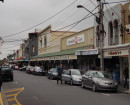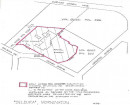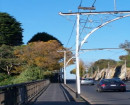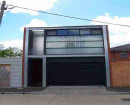RESIDENCE
130 POWLETT STREET EAST MELBOURNE, MELBOURNE CITY
-
Add to tour
You must log in to do that.
-
Share
-
Shortlist place
You must log in to do that.
- Download report
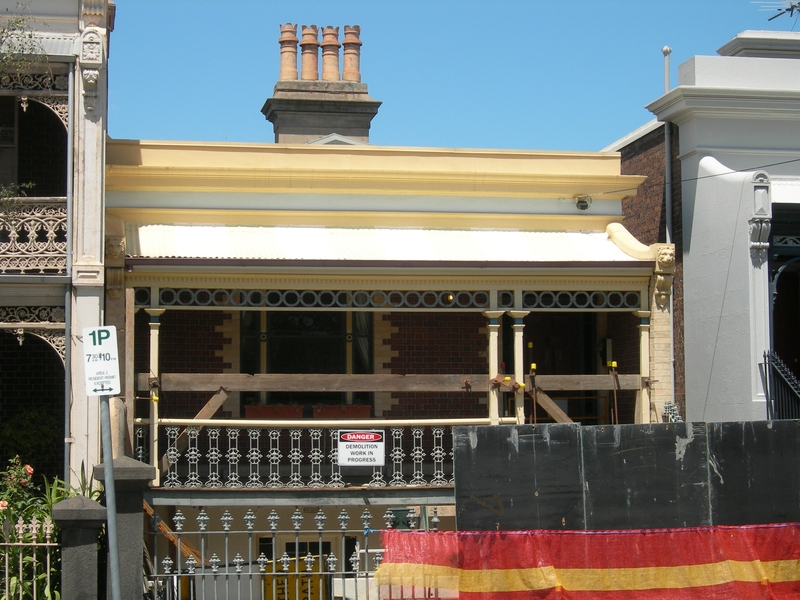

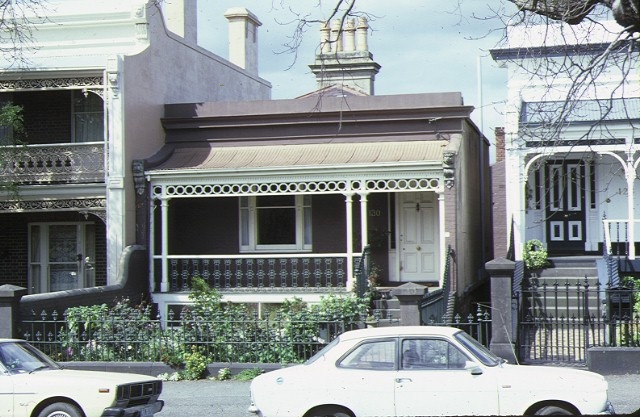
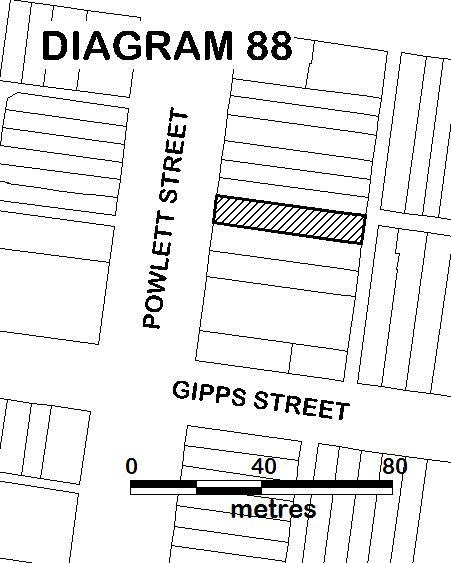
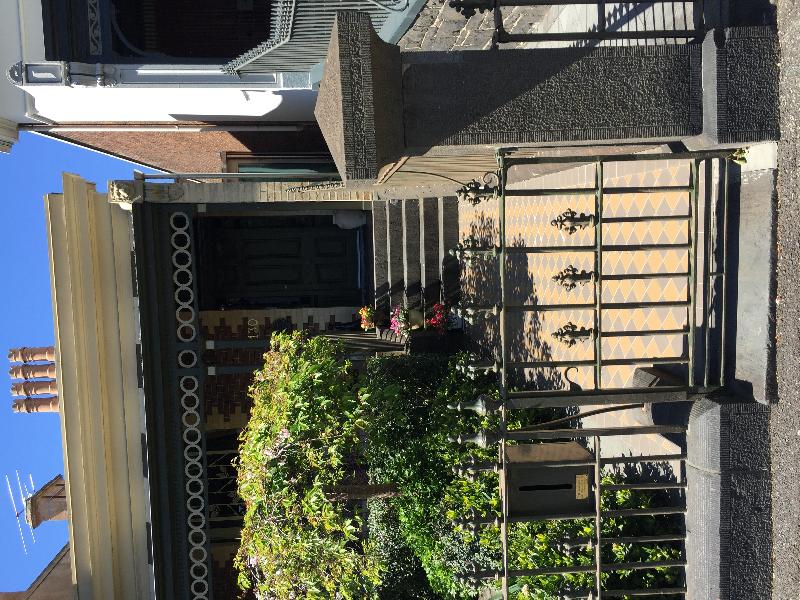
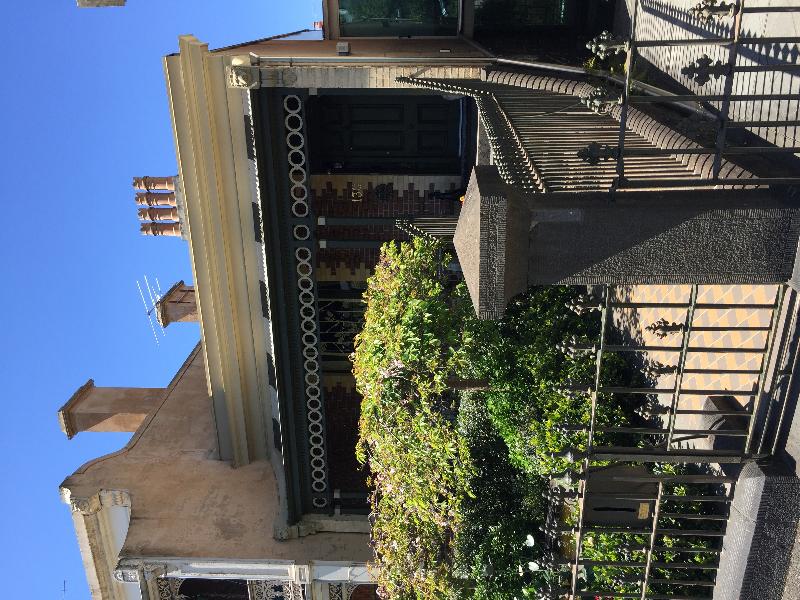
Statement of Significance
What is significant?
130 Powlett Street is a simple brick house built in 1867 by Duncan and Burley for Steven Trythall. The sloping site has dictated a single storey front elevation and a two storey rear elevation. The main entrance is offset on the main facade by a single central window. The verandah has simple paired flat timber columns, a circular pattern frieze with a beaded cornice, cast iron balustrade and a concave corrugated iron roof. The party walls have simple cement mouldings. The plain stuccoed parapet conceals the slate roof, except for a dominant brick chimney stack. A cast iron palisade fence divides the front garden from the street.
How is it significant?
130 Powlett Street is of architectural and social significance to the State of Victoria.
Why is it significant?
130 Powlett Street is architecturally significant as an early example of residential development in the East Melbourne area. It is an attractive mixture of various design motifs and materials. 130 Powlett Street is socially significant as the home of Steven Trythall from 1867 until 1896. Trythall was headmaster of Trinity Public School at the corner of Hoddle Street and Victoria Parade.
-
-
RESIDENCE - History
CONTEXTUAL HISTORY
The Melbourne builders Duncan and Burley filed a Notice of Intent to Build with the Melbourne City Council on 15 January 1867, and in the following months they built a two storey town house in Powlett Street for Stephen Trythall, then employed as teacher at the Trinity Public School located nearby at the corner of Hoddle Street and and Victoria Parade. Trinity Public School was a Church of England private school. In an article in the Collingwood Observer in 1865 Trythall stated that the school had three teachers and three assistants.
Stephen Trythall is listed in the Melbourne Directory for 1872 as a teacher, and in the 1886 directory as headmaster of State School No.1886 in Lithgow Street, Collingwood.
(Notes from letter on file by Allan Willingham)
Associated People: Stephen Trythall, Headmaster Trinity SchoolRESIDENCE - Permit Exemptions
General Exemptions:General exemptions apply to all places and objects included in the Victorian Heritage Register (VHR). General exemptions have been designed to allow everyday activities, maintenance and changes to your property, which don’t harm its cultural heritage significance, to proceed without the need to obtain approvals under the Heritage Act 2017.Places of worship: In some circumstances, you can alter a place of worship to accommodate religious practices without a permit, but you must notify the Executive Director of Heritage Victoria before you start the works or activities at least 20 business days before the works or activities are to commence.Subdivision/consolidation: Permit exemptions exist for some subdivisions and consolidations. If the subdivision or consolidation is in accordance with a planning permit granted under Part 4 of the Planning and Environment Act 1987 and the application for the planning permit was referred to the Executive Director of Heritage Victoria as a determining referral authority, a permit is not required.Specific exemptions may also apply to your registered place or object. If applicable, these are listed below. Specific exemptions are tailored to the conservation and management needs of an individual registered place or object and set out works and activities that are exempt from the requirements of a permit. Specific exemptions prevail if they conflict with general exemptions. Find out more about heritage permit exemptions here.
-
-
-
-
-
RESIDENCE
 Victorian Heritage Register H0142
Victorian Heritage Register H0142 -
RESIDENCE
 Victorian Heritage Register H0143
Victorian Heritage Register H0143 -
PART OF FORMER FOY AND GIBSON COMPLEX
 Victorian Heritage Register H0896
Victorian Heritage Register H0896
-
'The Pines' Scout Camp
 Hobsons Bay City
Hobsons Bay City -
106 Nicholson Street
 Yarra City
Yarra City -
12 Gore Street
 Yarra City
Yarra City
-
-






